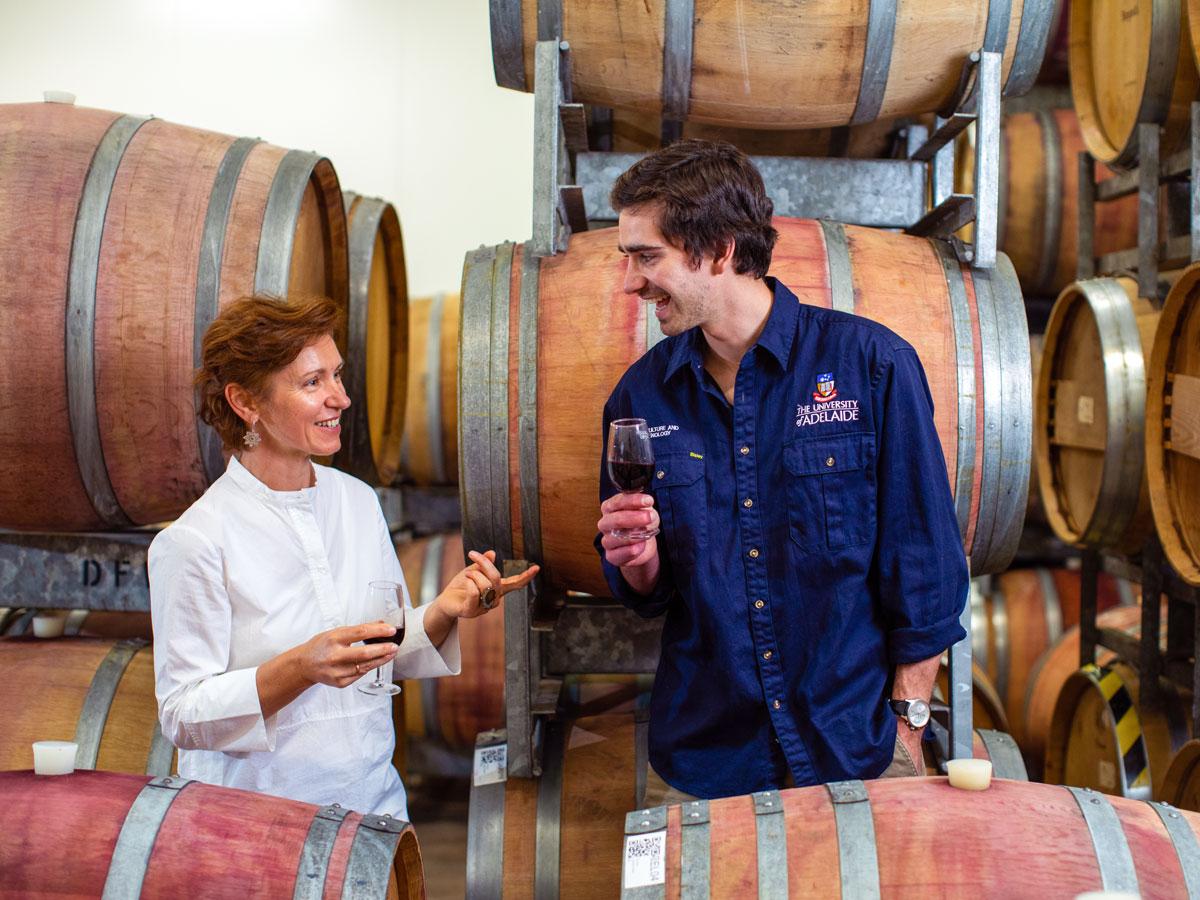Scientists discover enzyme structure: potential to manipulate wine acidity

Wine researchers say their latest discovery may one day lead to winemakers being able to manipulate the acidity of wines without the costly addition of tartaric acid.
The team of researchers has uncovered a key step in the synthesis of natural tartaric acid in wine grapes – identifying and determining the structure of an enzyme that helps make tartaric acid in the grapes.
“Tartaric acid is important in all wines – red, white and sparkling – providing the finished wine with the vital acid taste to balance the sweetness of alcohol,” says project leader Associate Professor Chris Ford, Interim Head of the University of Adelaide’s School of Agriculture, Food and Wine.
“For example, in white wines such as a dry Riesling from the Eden Valley, the liveliness of the wine on the palate and the delicate balance of fruit flavours is due to careful management of acid levels in the grapes and during winemaking.
“However, it is often the case that natural levels of acidity in grapes are not enough for winemakers’ requirements, requiring the addition of more tartaric acid.”
Estimates have suggested that this costs over $10 million to the Australian wine industry each vintage, so understanding what controls the natural levels of acids like tartaric in the grape berry has the potential to save the industry significant sums of money.

“Tartaric acid is important in all wines – red, white and sparkling – providing the finished wine with the vital acid taste to balance the sweetness of alcohol.”Project leader, Associate Professor Chris Ford
“For this to become a reality, we need first to understand the details of the biochemical pathway that produces tartaric acid in the grape,” says Associate Professor Ford.
This recent discovery follows an earlier collaboration with University of California Davis, when in 2006 the first enzyme in the six-step pathway that leads from vitamin C (ascorbic acid) to tartaric acid was discovered. Now a second enzyme has been identified and its structure determined and results published in the Journal of Biological Chemistry .
Associate Professor Chris Ford and Dr John Bruning, a protein crystallographer and enzymologist from the School of Biological Sciences and Institute for Photonics and Advanced Sensing, worked with researchers at Flinders University, the James Hutton Institute, Dundee, and postgraduate students Crista Burbidge, Emi Schutz and Yong Jia. They identified the enzyme based on its similarity to a bacterial enzyme with the same properties.
The enzyme was confirmed on the basis of its biochemical activity, and crystals of the enzyme grown so that its structure could be determined to atomic resolution using high-powered X-rays.
“Now that we understanding the 3D structure of this enzyme we can define its function and therefore its chemical mechanism and how it carries out its job in the grape,” says Dr Bruning.
“That means we can modify the structure for biotechnological purposes down the line, such as altering the protein to change tartaric acid levels in the plant, instead of directly adding the acid at huge cost to winemakers.”
Associate Professor Ford says, “as each piece of this intriguing puzzle falls in to place, our understanding of the metabolism of this critical grape acid increases."
"We now need to get to grips with the genetic, environmental and viticultural factors we may be able to manipulate to modulate the natural levels of tartaric acid in the grape.”
